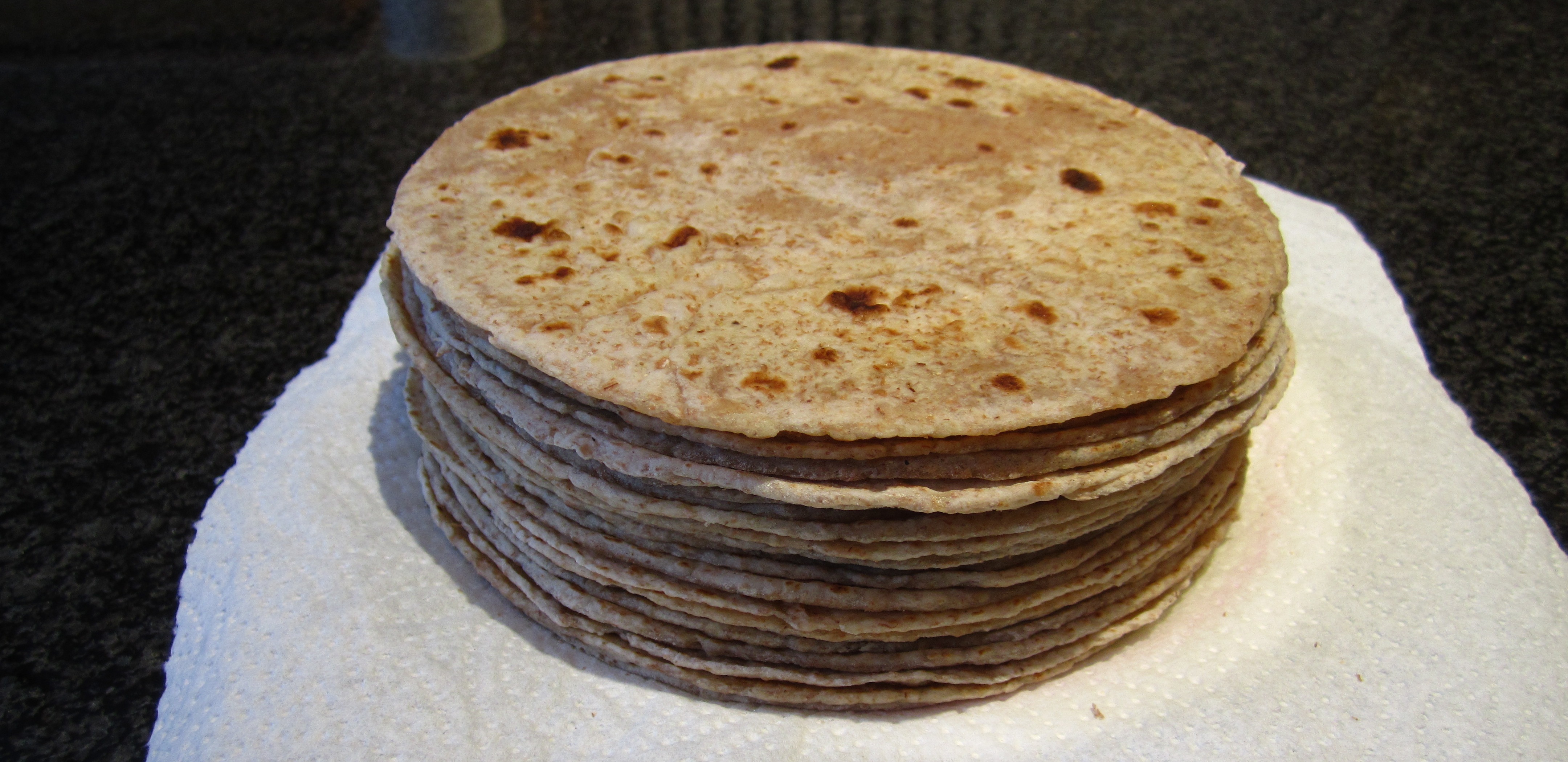There’s nothing quite like eating fresh hot buttery rotlis. Rotlis (chapatis) are traditional unleavened flatbreads made with whole wheat flour and used to accompany any shak (curry).
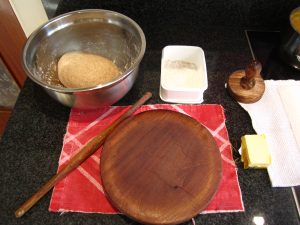
To make rotli, we use a patlo (round raised board), a velan (a rolling pin that’s thicker in the centre and tapered towards the ends that allows you to turn the rotli as you’re rolling it) and a lodhi (a flat dry pan). However, you can use any flat surface to roll out the rotli and a normal rolling pin if you don’t have a tapered one.
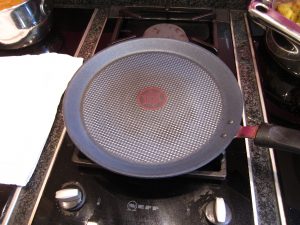
Ingredients (to make approx. 24 rotlis, depending how big you like them):
- 500g chapati flour
- 2 tbsp thel (sunflower oil)
- 400ml hot water
- Extra flour for kneading and rolling
- Butter or ghee (optional)
Method:
- In a large bowl, combine the flour and thel and gradually add the hot water, kneading as you go. Knead the dough for a good 5 minutes until you have a smooth, firm dough – similar to the texture of playdough. It shouldn’t feel sticky and should hold an indent. If you are making the rotlis later, then wrap the dough in a bag or cling film so that it doesn’t dry out.
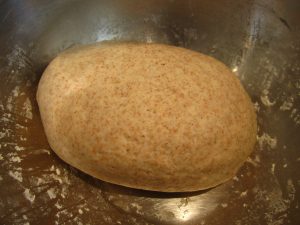
Rotli dough - Heat the lodhi (frying pan) to a medium heat.
- Take a small portion of the dough, roughly the size of a golf ball, into the palm of your hand and press into a circle.
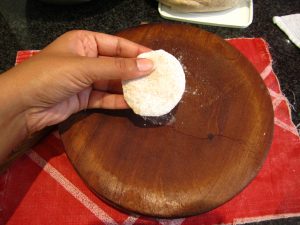
Portion the dough for each Rotli - Coat in flour and then roll into a thin circle (approx. 8 inches in diameter). To vann (roll) the rotli, use slightly more pressure on one side of the velan (rolling pin) which will turn the rotli as it’s being rolled, helping create the circle. Add more flour if needed to roll into a thin, even circle.
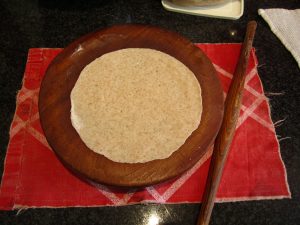
Vann the Rotli into a thin circle - Place the rotli into the lodhi (frying pan) – this part is called sekkvanu (meaning to cook the rotli). Once you can see slight bubbling, turn the rotli.
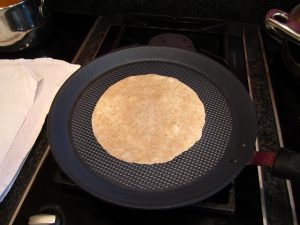
Ready to turn for the first time - Wait until the colour turns slightly darker and it’s cooked through and then turn again.
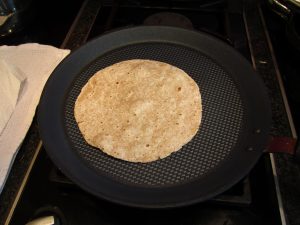
Ready to turn for the second time - Once turned, press down on the rotli with either a wooden presser (like the one in the picture) or folded cloth/kitchen roll to allow the rotli to puff up.
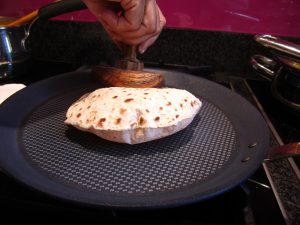
Using a press to help the rotli puff up - Take the rotli out and stack up on a plate. Be very careful of the steam from the rotli. Spread with butter or ghee (optional) and repeat. Once you get used to it, there’s a rhythm to ‘vann-ing’ the rotli while the one before is ‘sekk-ing’ (yes that’s right, we mix together Gujarati and English into single words in our family!)
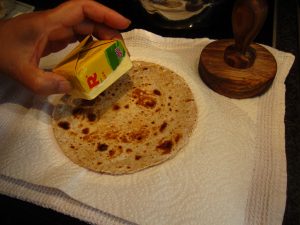
I love rotli spread with lots of butter - Stack up the rotlis until the dough is all used up and serve with some shak (curry).
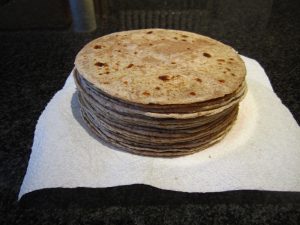
Nothing like fresh hot buttery rotli
Although rotli are traditionally eaten with shak, we also eat them as snacks. My favourite is hot rotli with gor (jaggery) rolled up as a sweet treat. Savoury versions include having them with athanu (pickles) or lili chutney (green chutney) and crushed papad (papadum) to add a crunch.
My mum also often as rotli for breakfast, warmed through to make them slightly crispy, with a nice hot cup of chai.

